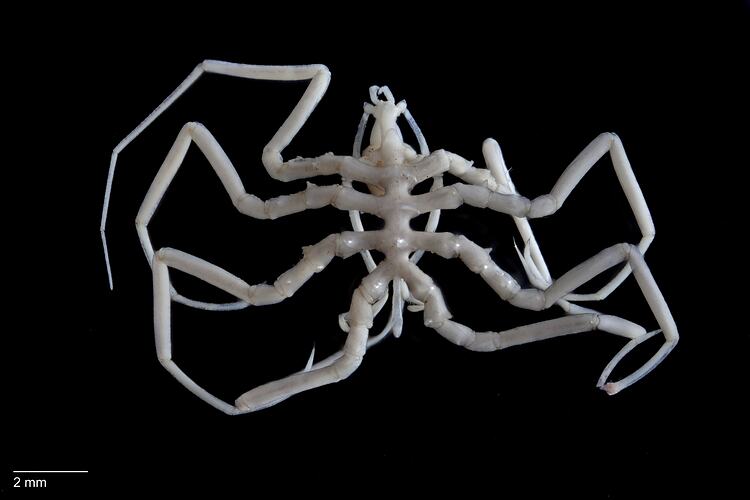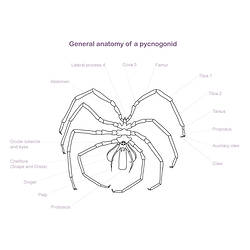General Description
Body with proboscis projecting outward from front, with the mouth at the tip. Central body (trunk) behind the proboscis, with a raised, rounded area (tubercle) bearing four or more eyes. Eight segmented walking legs attached to the sides of the trunk. Long abdomen behind trunk, segmented at base, usually angled downwards. Leg span about 2 cm.
Biology
This common species burrows into the seafloor, however it has been observed by divers at night moving on top of the seafloor, presumably feeding. They carry eggs in a protective gelatinous mass wrapped around part of their body. This may prevent the eggs being dislodged as the individual burrows in the sand. The backward-facing proboscis is also possibly an adaptation to decrease resistance when burrowing. Males carry the eggs, holding them between body parts called ovigers that hang under the animal.
Distribution
South-eastern Australia, including western and central Victoria.
Habitat
Sand areas, to depth of 40 m.
More Information
-
Animal Type
-
Maximum Size
2 cm
-
Habitats
-
Endemicity
-
Commercial
No
-
Conservation Statuses
DSE Advisory List: Not listed, EPBC Act 1999: Not listed, IUCN Red List: Not listed
-
Depths
Shallow (1-30 m), Deep ( > 30 m)
-
Water Column Locations
On or near seafloor
-
Taxon Name
-
Scientific Author
(Haswell, 1885)
-
Common Name
Pycnogonid
-
Other Names
Sea spider
-
Phylum
-
Subphylum
-
Class
-
Order
-
Family
-
Genus
-
Species Name
longicollis



